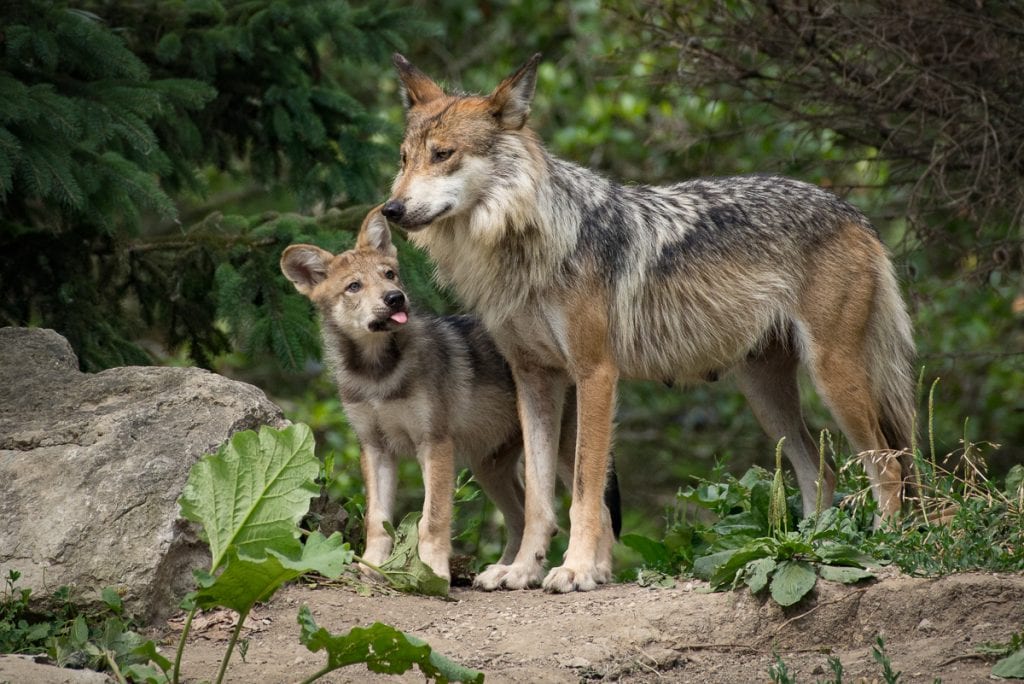Current work in wildlife, rivers, public lands, and climate
Press Releases
Mexican gray wolf rule eliminates cap on population, restricts killing
“Mexican gray wolves have won a reprieve from a planned massacre, but their hopes to find unrelated mates are being dashed at the same time,” said Michael Robinson, a senior conservation advocate at the Center for Biological Diversity. “It’s disappointing that the federal government still refuses to replenish the priceless genetic diversity lost through its own mismanagement of these wolves.”
A final environmental impact statement justifies the new rule, which temporarily curtails some federal, state and private wolf-killing.
To enhance the wolf population’s genetic diversity, the rule has a goal of ensuring that 22 captive-born wolf pups that have been introduced to the wild survive through their second year of life. But there are no requirements that those wolves breed.
“The Fish and Wildlife Service is hinging genetic health to an irrelevant metric,” said Maggie Howell, Wolf Conservation Center executive director. “Unless those cross-fostered wolves who survive to breeding age actually reproduce, those animals have zero impact on the wild gene pool. So how are they moving the needle any closer to a genetic objective?”
Further, the Service decided not to resume releasing well-bonded male-female pairs with pups from captivity into the wild as families to increase their chances of survival. Instead, the agency decided to double down on its practice of placing neonatal pups removed from their captive parents into the wild with unrelated wolves.
“Cross-fostering alone will not produce a thriving, recovered, and genetically healthy Mexican gray wolf population,” said Sandy Bahr, chapter director for Sierra Club’s Grand Canyon (Arizona) Chapter. “The Fish and Wildlife Service has again missed an opportunity to do right by these highly endangered animals and to promote release of well-bonded wolf packs into Arizona and New Mexico.”
Only 13 of the 72 cross-fostered pups that have already been released to unrelated wolves are known to be alive today. Just four of these wolves are known to have reproduced, and only six of the offspring, all from just one of those four wolves, are known to be alive. Since the Service started releasing pups without their parents in 2016, inbreeding in the population has increased by 3%.
“The Service admits that they received approximately 82,000 public comments that somehow did not result in substantial changes to their final environmental impact statement,” explains Michelle Lute, Ph.D., wolf conservation and national carnivore conservation manager for Project Coyote. “This lack of accountability to the public who supports strong lobo recovery tells you everything you need to know about the Service’s leadership on the issue. So much more can and should be done to protect wolves and promote coexistence.”
“With the added stressors of accelerating climate change already falling heavily on their Southwest home, Mexican gray wolves don’t have time for Fish and Wildlife Service to sidestep the full set of actions needed to recover the lobo,” said Kelly Burke, Wild Arizona’s executive director. “The wolves are bravely doing their part, but regrettably the Service still needs to get fully onboard.”
“Sadly it has become the norm for this program to ignore the best science and public support for actual, robust wolf recovery and instead opt for the minimum,” said Chris Smith, southwest wildlife advocate at WildEarth Guardians. “These wolves need real genetic rescue, access to more habitat, and an essential designation. This rule — while a fractional improvement on the prior attempt — still fails lobos.”
The new rulemaking was prompted by a 2018 court victory by several conservation organizations over the 2015 Mexican wolf-management rule. That 2015 rule stemmed from a 2013 settlement agreement with the Center over failures in the Service’s 1998 reintroduction and management rule.
The Fish and Wildlife Service was ordered by the court to release the final wolf management rule by July 1.
Background: The Fish and Wildlife Service and its predecessor agency exterminated gray wolves from the western United States between 1915 and 1945 on behalf of the livestock industry. The government also exported poison to Mexico to enable wolf poisoning there beginning in 1950. The 1973 Endangered Species Act led to the remaining Mexican wolves being captured alive. Seven bred successfully in captivity, and the subspecies was reintroduced in the U.S. in 1998 and Mexico in 2011.
Pups are now being born, including in places that wolves last consistently occupied in the 1920s. Multiple wolves now live in the San Mateo Mountains of west-central New Mexico. A lone female has established a home range west of Albuquerque.
In addition to the 196 wolves counted in the wild in Arizona and New Mexico early this year, approximately 35 wolves live in Sonora, Mexico.

Mexican gray wolf and pup. Photo by Bob Haarmans.